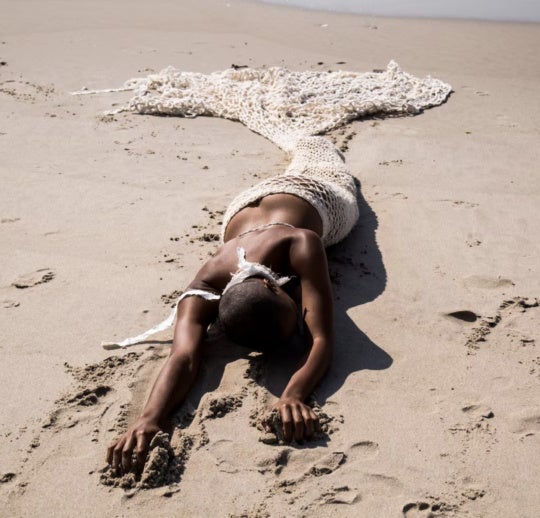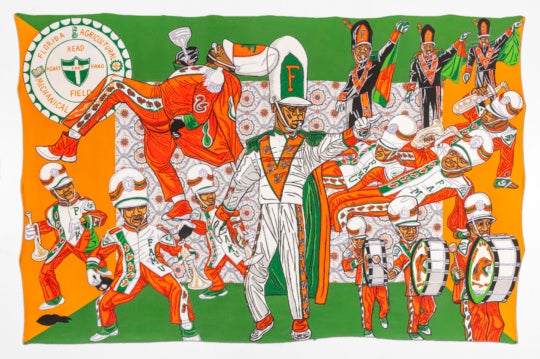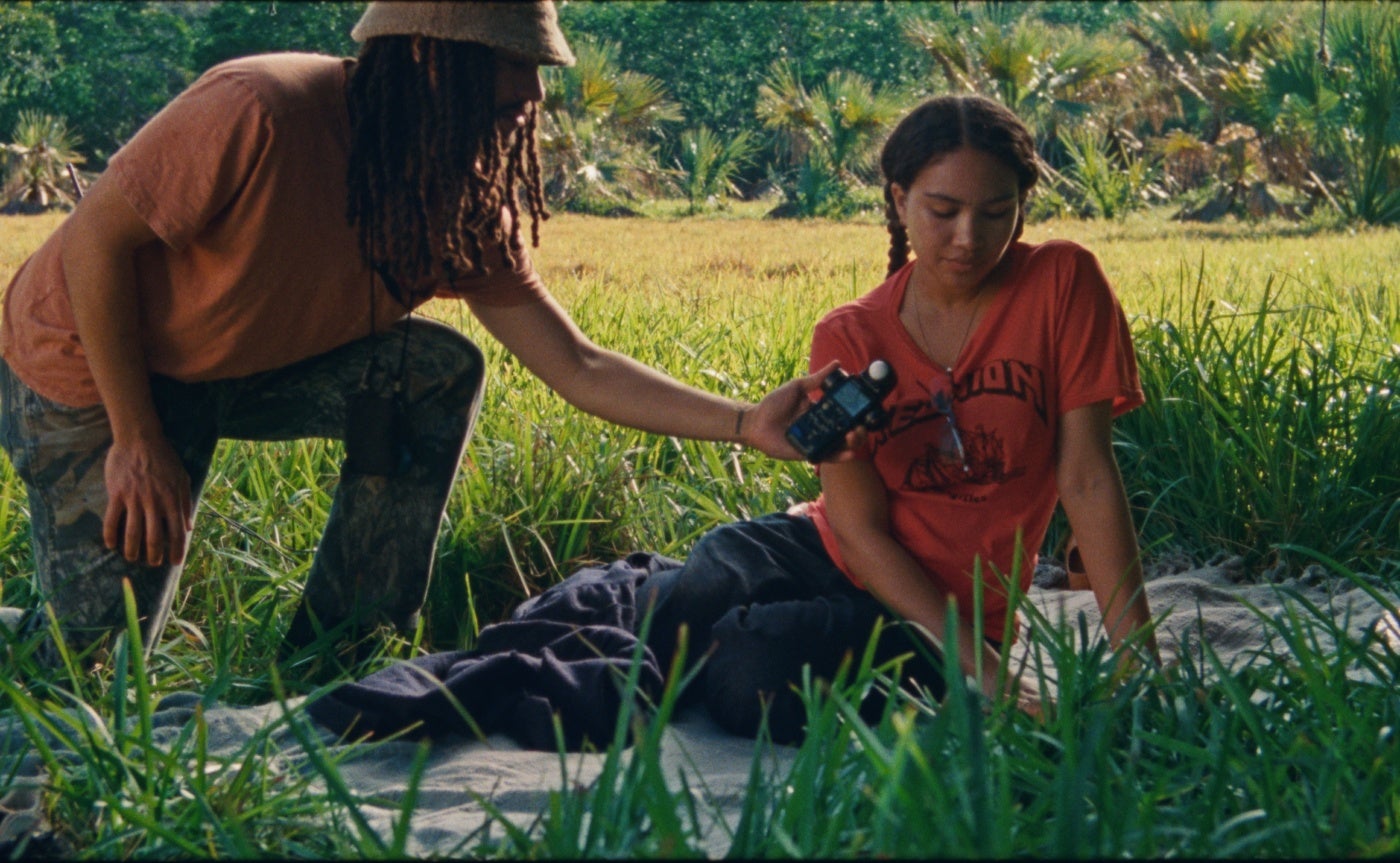
A slow pace, scenic shots, and Black skin illuminated under sensuous lighting are all fodder for my ideal film. I often recall visiting the landscapes of my grandparents, the large billowing trees that danced in the wind in Savannah, or the rotting mangos that adorned my grandparent’s yard in St. Croix. I’m devoted to investigating the connective tissue between Black Caribbeans and Southerners. As people with shared ancestors and a similar journey to the Americas via the Transatlantic Slave trade, I’m curious how these analogous lineages manifest immaterially. These terrains, marked by colonial histories, and subject to eroding protective wetlands and harmful development, harbor robust provocateurs who I see as interlocutors. The Ballad of Suzanne Césaire (2024) and All Dirt Roads Taste of Salt (2023), represent distinct histories and gathered memories, yet, their shared themes of matrilineal Black leads, wetlands, and potent intimacy come in conversation with each other alongside parallel legacies of ecological and familial reverence and crisis.
The Ballad of Suzanne Césaire, directed by Madeleine Hunt-Ehrlich, looks to Suzanne Roussi Césaire, the writer, mother, and wife to Aime Césaire, before filing for separation legally, and centers her 1945 essay “The Great Camouflage.” The essay pulled the curtain back on Martinique, revealing the contrasting nature of the tropical environment and its peoples. In the film, shot in the Miami Beach Botanical Garden, which functions as an ecological repository, Hunt-Ehrlich centers Suzanne’s seven writings and begins to unravel pieces of her archive. In All Dirt Roads Taste of Salt, Raven Jackson weaves together a poetic constellation of portraits depicting Mississippi life. Viewers follow Mack, a Black girl entrenched in a revolving domestic landscape, in a nonlinear journey sited in the Gulf Coast, bestowing them with fragments of her life and home.
Wetlands are a physical connection relating Martinique to Miami, and Martinique to Mississippi. Martinique and Miami are conjoined by their lush mangroves, tropical plants that become tendrils in wet soil, and saltwater. As a wetland that grows in the company of freshwater and seawater in coastal environments, mangroves function as a nursery for adolescent sea life. In Mississippi, other forms of wetland’s manifest, such as lush swamps and marshes that nurture the surrounding ecosystem, feeding wildlife and safeguarding them. These swamps, at times, functioned as shelter to escaped slaves alongside the plant life. The ethos of “The Great Camouflage” articulates that nature camouflages reality, and like the histories embedded in the murky swamps and saltwater, opaque to those not looking, surreal encounters can rupture an idyllic landscape, revealing the shadows previously obscured from the people.
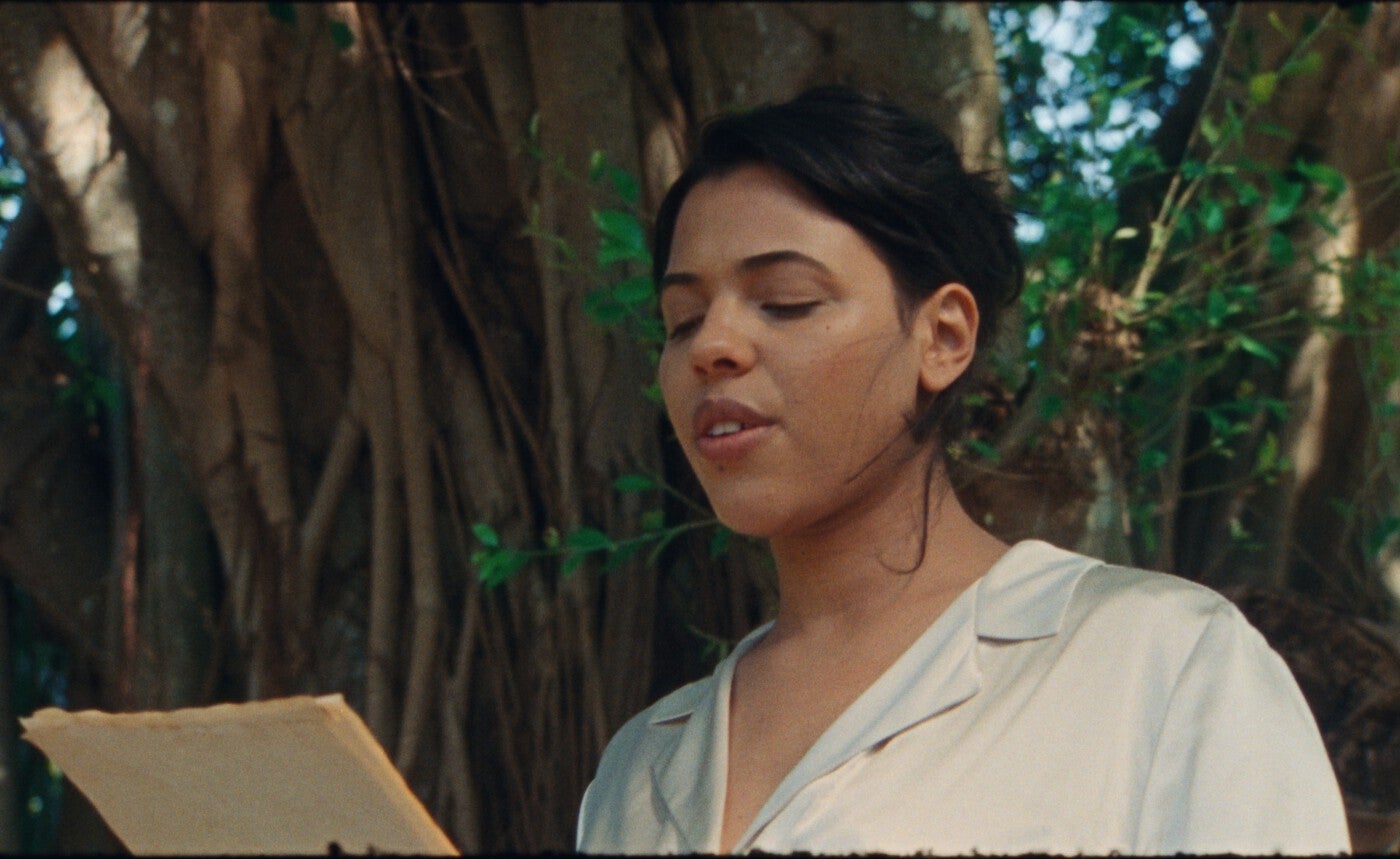
The Ballad of Suzanne Césaire
The legacy of Césaire is confronted in both the feature, The Ballad of Suzanne Césaire, and twenty-six-minute film Too Bright to See (Act I) (2023). The short, installed initially at the Pérez Art Museum in Miami before moving to the 2024 Whitney Biennale, serves as the prelude to the full-length film. Césaire’s known writings include seven essays and one lost play, and her archive is textured with her conversations on and off the page. Hunt-Ehrlich dips Césaire’s life and archive in surrealism, which is fitting as Suzanne Césaire co-founded the journal Tropiques (1941–1945), a surrealist text.
Césaire, living under the fascist Vichy regime in Martinique, saw Surrealism as “the tightrope of our hope,” believing that one’s imagination was the key to radical change.[1] Living alongside an ongoing legacy of race and class-based inequalities, Césaire’s writings offered an alternative to the assimilation pushed on to Marticians, and her resistance and support aided peoples across the African diaspora. Her writings remain relevant to the surreal experience of being Black under a colonial society. Hunt-Ehrlich noted that her surrealist imaginings were more minimal, like entering the film through traditional dance and drum music, centering the film in the afro surreal.[2] It reveals itself through the actors playing Aime Césaire and Andre Breton walking blindfolded through a field seemingly without reason. Martinique’s surrealism, transplanted in Miami in the film, comes forth through a horse adorned with bows, as “The Great Camouflage” begins with the death of a horse, and blood seeping through the wetlands.
The Ballad of Suzanne Césaire dances through narrative and paints an abstract portrait of Suzanne Césaire’s writing and legacy. Marked by the central actor, Zita Hanrot makes sense of Suzanne Césaire’s words and commentary to prepare for her role as the writer on screen. Meanwhile, the film maneuvers the landscape’s sinuous paths. The viewer’s engagement in the paradisiacal shots is often fragmented with commentary by the crew and the ever-present clapboard breaking the third wall. The film’s fluidity, enforced by Sabine McCallas’s soundtrack, drapes the work in a haunting melody shaped by prolonged shots with minute movements. Blackness is a constant. Viewers return to it through the night sky and still waters, through the starkness of Suzanne’s text, and the entirety of the cast, with the exception of the on screen caregiver to Suzanne Césaire’s child.
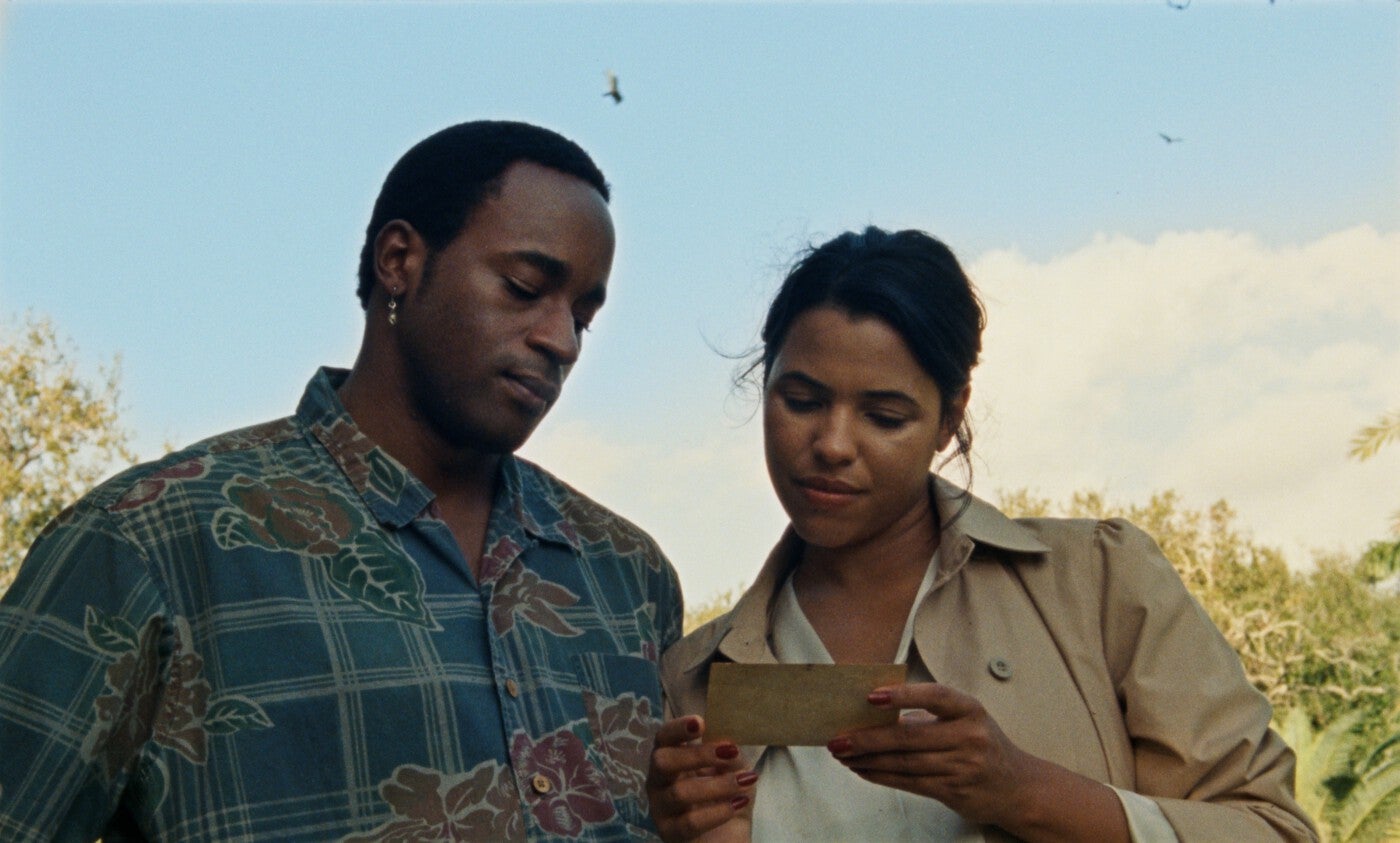

Speaking with the Hunt-Ehrlich, she discussed motherhood in relation to filming.[3] Hanrot and herself were both new mothers during production. Their matrescence echos throughout the work through the cries of babies, often functioning as a disturbance to the paradisiacal shots. Upon Hunt-Ehrlich’s sojourn to Martinique to acquire more material on Suzanne, she learned Suzanne burned her own papers. Her memory was available only in the oral histories of her family and community. Thus, the shape of her archive is informed by her motherhood, which honors her life as a mother of six alongside being a writer and asserts that her motherhood, as well as Hunt-Ehrlich and Hanrot’s, is interconnected to their creative practice.
Building Suzanne’s image within the film, the audience understands her not just as a mother and writer, but as a lover. The film depicts intimacy. Spliced throughout, viewers glimpse Suzanne’s longing. Sitting under luscious trees, dancing in her lover’s arms in a 1940s cafe, and holding her child—her life is marked by curiosity. Like Césaire, many women, including the ancestral women of my own family draped across the South and the Caribbean, carry legacies shaped by their romantic affiliations. The film presents a fuller Césaire, portraying her longing for change alongside her connections to loved ones and kin. The precious nature of her adornments, her lipstick, nails, and hair, become significant. These external markers of beauty and care, like Martinique’s geography, stand in stark contrast within the content of her writing. By the end of the film, this contrast builds toward a moment of political destabilization, as the fictitious natural landscape reveals itself as a living, disruptive being, upending the carefully cultivated terrain.
Césaire, living under the fascist Vichy regime in Martinique, saw Surrealism as “the tightrope of our hope,” believing that one’s imagination was the key to radical change.
All Dirt Roads Taste of Salt
Raven Jackson submerges viewers in the Mississippi wetland in All Dirt Roads Taste of Salt with saturated scenes entangled with grief and longing. Each shot lingers, and viewers return to familiar sites with and without characters. The film follows a matrilineal ecosystem; it includes snippets of Mack’s life in relation to her sister, her mother, and her grandmother, as well as sharing her relationship with her father and lover. All Dirt Roads Taste of Salt moves like a poem with cut off stanzas and intentional line breaks. Like The Ballad of Suzanne Césaire, this film is sutured by intimate moments.
Jackson, a poet and filmmaker, centers the Mississippi landscape’s beauty, giving viewers a space for breath in the work. Each scene, like the first where Mack is fishing with her father, has limited dialogue, and instead, focuses on sounds, movements, and how individuals physically maneuver space. Often translating poetry to visual imagery, Jackson speaks to the mundane. Images of rain brushing one’s fingertips, a first kiss, a fish out of water wincing in a young child’s hand, are lateral to the loss of a loved one and the birth of a child. Because of Mississippi’s topography and its relation to the water, Jackson contemplates tempered moments, the ones that follow loss, in order to increase their force.
Towards the end of the film, there is a glimpse of Mack midway through her life sitting beside still water. The toads and the birds chirping, and the water ripples in response to Mack’s touch, just slightly disturbing the stillness of this murky body. And then—doors click, hands touch, a baby cries, the fire crinkles, and the cicadas sing their favorite hymnal. The soundscape is entrenched in nostalgia, sonically infusing the film with petrichor.
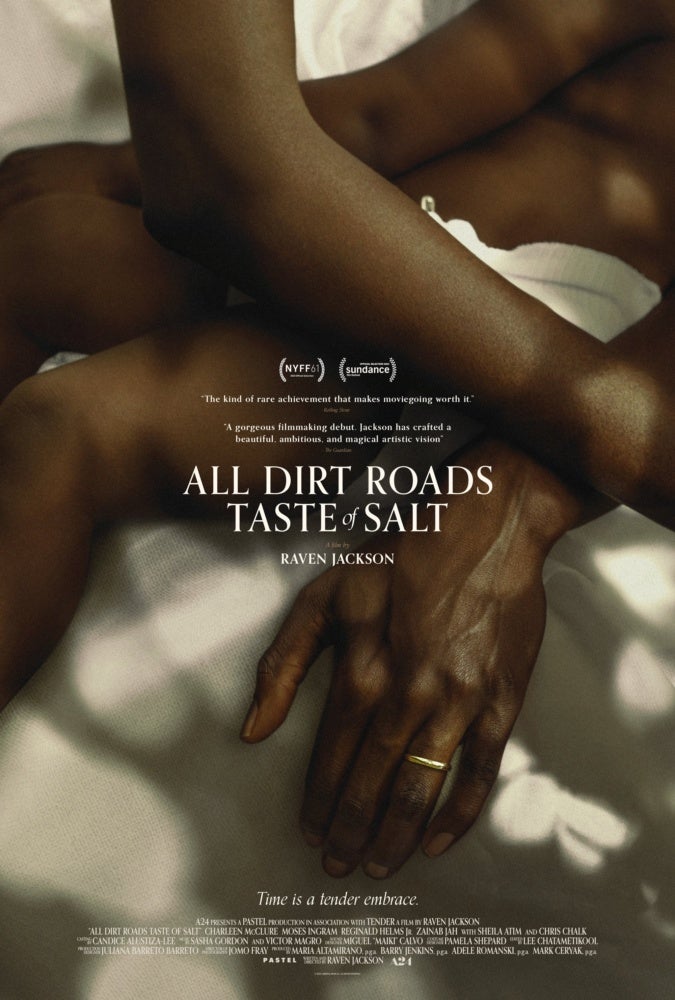
The women in Macks family are woven together and centered. Her sister becomes a mother to her daughter, her mother becomes a shadow and a glimmer. At the surface, much of Mack and her mother’s relationship is pregnant with silence. They pick dirt together, an activity born out of Jackson’s own upbringing and grandmother’s dirt-eating practices.[4] The film was shaped between Jackson and cinematographer Jomo Fray, mending sensorial images into scenes. We see Mack watch her mother apply lipstick. In fire, viewers see Mack lose her home. In rain, viewers see Mack lose her mother.
As I watched Mack and her sister, adorned with matching pigtails pointed to either side, in little Black dresses, digging up dirt, the film’s last scene opened a surreal sensation in me. Their attire and tones look almost identical to an image I recently saw of my mother and her sister as girls in Savannah—the first image I saw of them as children. The scene honors that image of many Southern Black girls, typically relinquished to basements, attics and boxes, or destroyed through the movements of life. The nature of personal excavation, of sifting through the images made of one’s family, swells with temporal histories impacting the understanding of an image. All Dirt Roads Taste of Salts’ aesthetics were heavily influenced by Jacksons’ intimate investigation into her familial archives, which resulted in this relational film.
Analogous Ecologies
To make The Ballad of Suzanne Césaire, Hunt-Ehrlich traveled to Martinique and spoke to the friends and family of Césaire, aiming to have a fuller understanding of her world and practice. In making All Dirt Roads Taste of Salt, Jackson turned to the family albums of her maternal grandmother to influence the texture.[5] Both films were built out of slow study and ephemeral materials, birthing from confrontations with themselves and history.
Like the wetlands of Martinique, Mississippi, and Miami—spaces that offer sanctuary to aquatic life and extend their tendrils as protection—Césaire’s concepts flourish in the same fertile grounds that nurtured the work of Hunt-Ehrlich. Hunt-Ehrlich’s practice as a filmmaker emblazons the archives of Black women, coalescing meticulous research with surrealism to reveal new contours in their histories. Raven Jackson’s films allow viewers to drift through quiet, sensuous imagery, creating space for meditation. Both filmmakers move beyond linearity, embracing fluid storytelling that mirrors the multiplicity of Black women’s liquid archives. As landscapes stained by colonialism, with histories embedded in the dirt that take shape as seeds and later take root, the settings depicted are conduits for ancestral reverence, conjoined by a diasporic tissue. Through these films, Raven Jackson and Madeleine Hunt-Ehrlich plant their own seeds of devotion, creating pathways for growth.
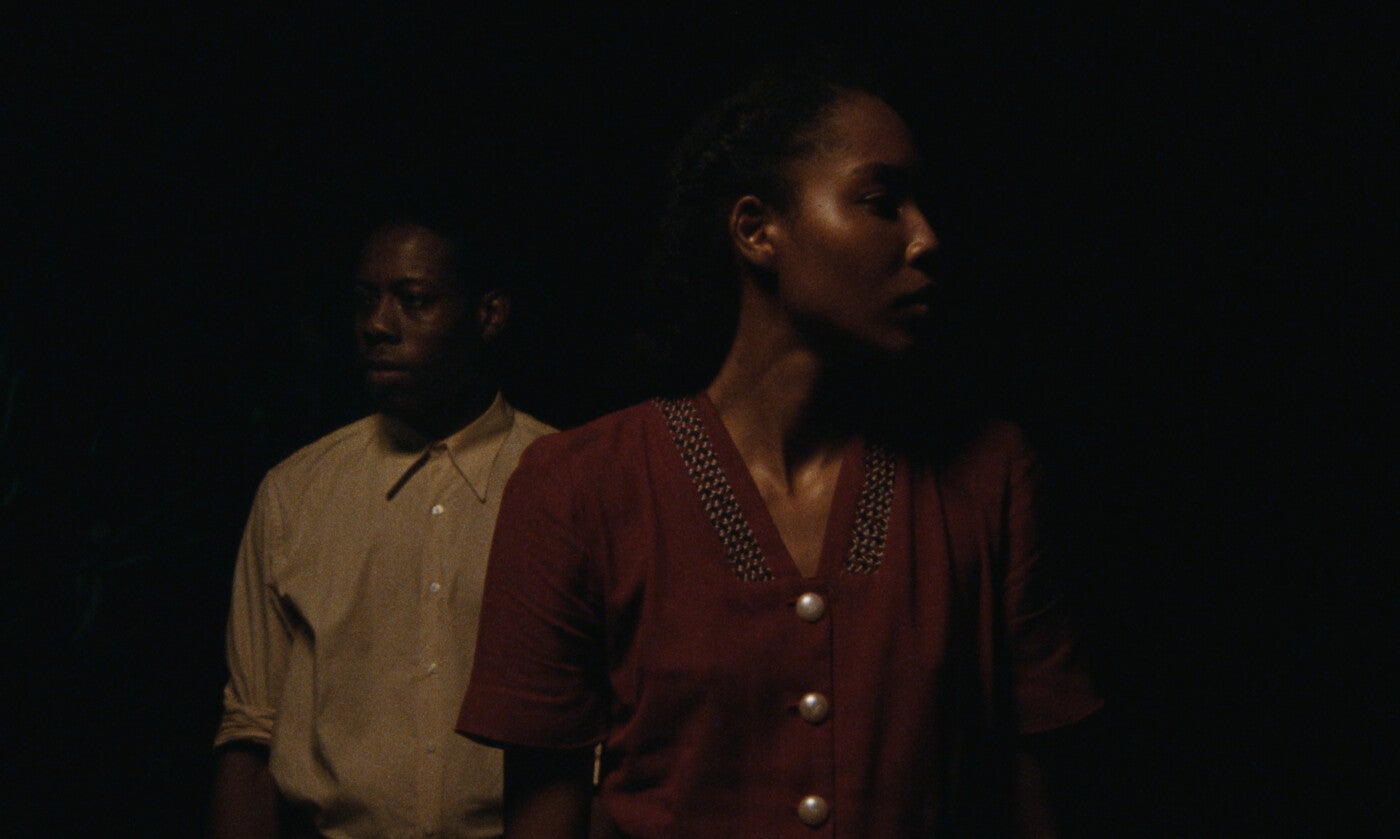
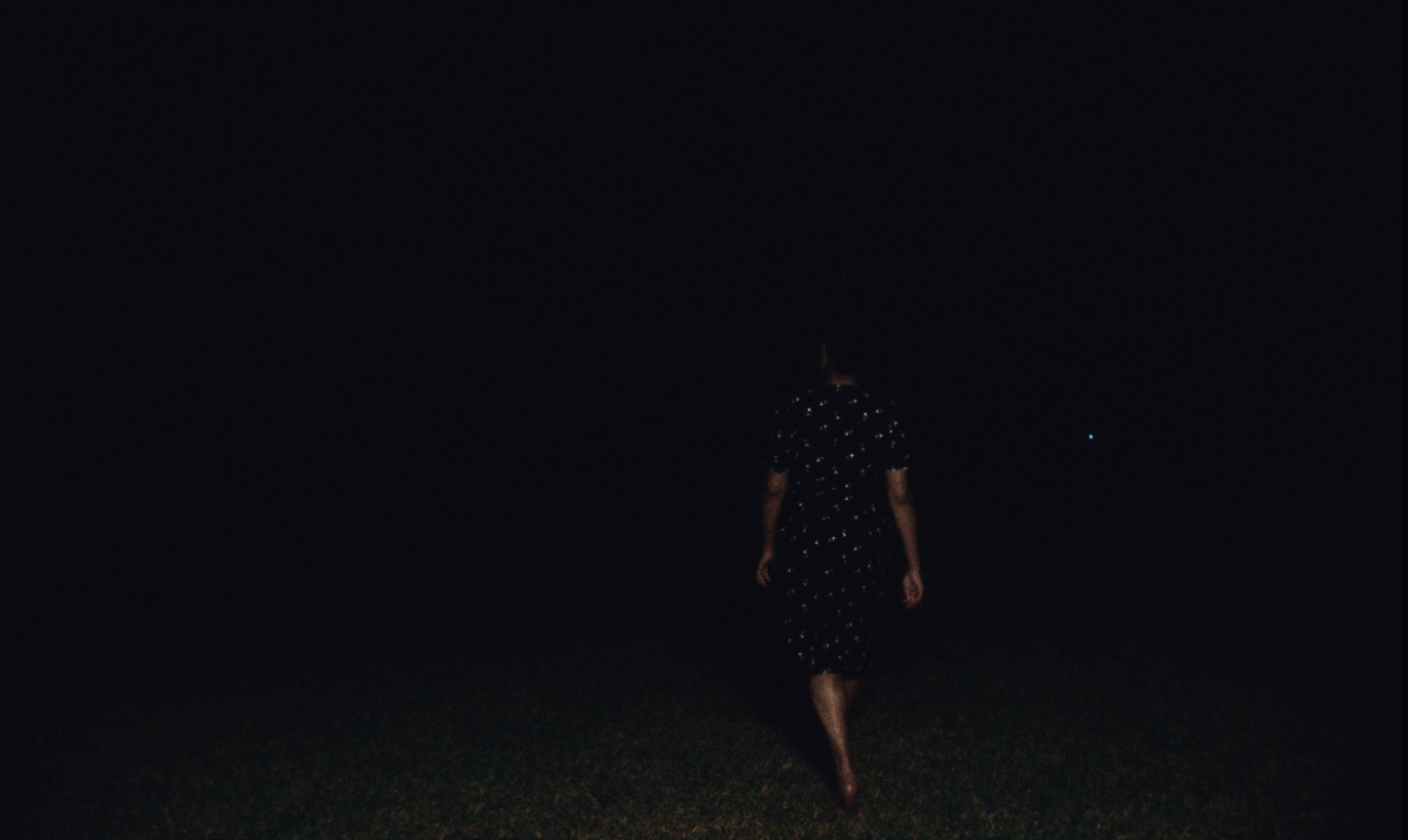
[1] Suzanne Césaire. The Great Camouflage: Writings of Dissent (1941–1945), ed. Daniel Maximin, trans. Keith L. Walker. Middletown, CT: Wesleyan University Press, 2012.
[2] In conversation over Zoom with Madeleine Hunt-Ehrlich.
[3] Ibid.
[4] Matene Toure, “Raven Jackson on Capturing the Beauty of Black Southern Life,” Seen, November 16, 2023, https://www.blackstarfest.org/seen/read/observed/raven-jackson-interview-all-dirt-roads/.
[5] Ibid.

This essay is a feature release of Burnaway’s 2024 theme series Twang.


